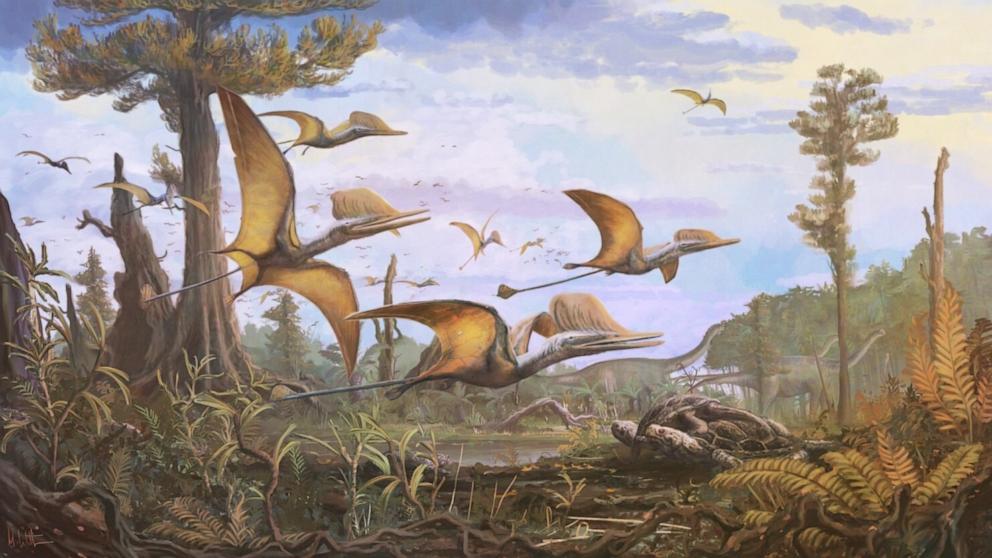The remains of a pterosaur, Ceoptera evansae, have been discovered on the Isle of Skye in Scotland. The skeleton is believed to be 166 to 168 million years old and was found on a small beach along the coastline of Loch Scavaig. The research was led by scientists from the Natural History Museum, University of Bristol, University of Leicester and University of Liverpool. The discovery was published in the Journal of Vertebrate Paleontology on Feb. 5, 2024. The remains of Ceoptera evansae include partial skeletons of the shoulders, wings, legs and backbone, and have been digitally scanned to reveal previously inaccessible elements. This discovery has led researchers to suggest that the Darwinoptera, to which Ceoptera evansae belongs, may have lived 25 million years longer than previously understood. This provides insight into the diversity of the species and its coexistence with avialans, the dinosaur species believed to evolve into modern birds. The discovery of Ceoptera evansae in the UK has surprised researchers, as most of its close relatives are from China, and it suggests that the advanced group of flying reptiles appeared earlier than previously thought and had a global distribution. The finding has brought researchers “one step closer to understanding” the evolution of pterosaurs during the Middle Jurassic period and has contributed significantly to the knowledge of this important time period in pterosaur evolution.
New discovery of a flying dinosaur skeleton on Isle of Skye in Scotland













